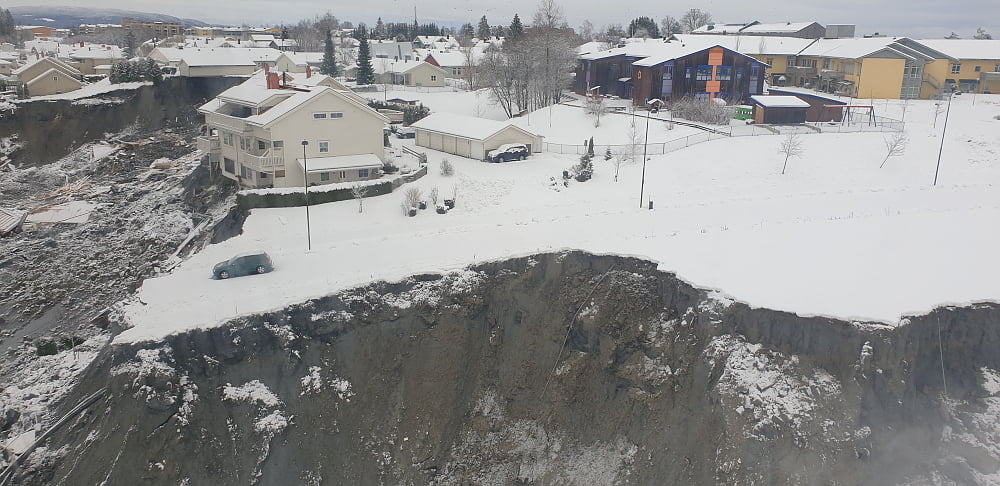A committee formed to investigate the tragic Gjerdrum landslide of 2020 has warned that the risk of future landslides in Norway is too high. It has made several recommendations.
Images of the tragic Gjerdrum landslide shocked the world when they appeared just before Christmas 2020. More than 1,000 people were evacuated, but ten people sadly lost their lives.

“I have forest in the garden that was not there before. It is a bit difficult to describe,” said an eye-witness who lives approximately 200 metres from the site.
Following the 2020 disaster, a committee was formed to investigate the risk of similar incidents in the future.
Impossible to remove all risk
Known as quick clay landslides, these events occur when the so-called quick clay (kvikkleire) liquifies and collapses. The substance is found primarily in Norway and Sweden, but also exists in parts of Finland, Russia, Canada and Alaska.
The Gjerdrum committee concluded that it is impossible to remove all risk of quick clay landslides. However, they also said the risk of further landslides today is higher than acceptable.

Preventing deaths is most important
A majority of the committee believes that Norway should have a goal that no one should die in future quick clay landslides. They recommend the creation of a national action plan to achieve that goal.
“All dangers of quick clay landslides cannot be removed. It is therefore a question of what level of risk society is willing to accept when it comes to such landslides,” said the report.
Clear recommendations to minimise risk
Many other recommendations were made, including that the responsibilities of different parties must be clearer. Areas known to have quick clay should be investigated, according to the report.

The Norwegian Directorate for Civil Protection (DSB) is already well aware of the risks posed by quick clay, calling it a “significant hazard” in large parts of the country. In its disaster planning report, DSB outlined a scenario for a quick clay landslide in a city.
The Norwegian Water Resources and Energy Directorate (NVE) maintains an overview of ten densely populated areas where quick clay poses a potential risk.
The committee's report also recommended the securing of existing buildings, while new development should follow safety requirements. It called for better monitoring of erosion and other changes in the terrain.

